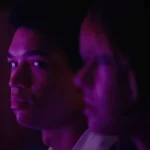Castles in the Sky: Kiki’s Delivery Service, by Aaron Pinkston
In today’s world, the time directly after graduating college has to the be the most frightening of one’s life. It officially marks the time when it is no longer socially acceptable to live in your parent’s extra bedroom. Now you must leave your quaint suburban life to enter the dark, scary city and find some sort of steady employment. If you’re able to find work in your field of study, you’re one of the lucky few. The rest of us have to sling coffee or mail letters while trying to find our true calling. In a curious way, Kiki’s Delivery Service captures this time extraordinarily.
Kiki is a young witch-in-training who leaves home a month before scheduled to embark on her post-collegiate life. In the world of Kiki’s Delivery Service, witches aren’t evil tricksters, but helpful women who act as some sort of missionary — leaving their home at a young age to find a city or town that doesn’t currently have a witch. While in their new environment, they must rely on their witching powers to find employment and their place in the world. Being witches, they are accompanied by a black cat companion. Kiki’s cat Jiji (voiced by the late and incredibly great Phil Hartman) is a wise-cracking cynic, the bright and cheerful Kiki’s perfect friend and foil.
Kiki stumbles into an unnamed, very European town which hasn’t seen a witch in many years. Through a few random acts, and due to her lack of training or skill at witching, Kiki begins the title delivery service. It is the perfect example of a non-serious, low pay job that so many people have to settle with, but Kiki finds out that she really enjoys the work. It allows her to meet interesting people in a town with few friends and earn a decent living. And, of course, it brings her close to a boy who provides a bit of young romance — can’t have a Ghibli film without a bit of love.
The theme of finding how you fit into the modern world is a one that Ghibli has played with in almost all of its films. Kiki’s Delivery Service uses the twist of the young woman also being a witch to its advantage. Though this character comes directly from fantasy, the rest of the surrounding world is purely realistic, with modern conveniences and concerns. Given the town Kiki lives in hasn’t confronted a witch in years (though they are aware of witches in this world), there are many elements which don’t mix, such as broom riding in heavy traffic and modern law enforcement. The opening scenes of Kiki in her new town satisfy this theme fully, without being a major focus.
Many of the Studio Ghibli films live purely in fantasy, while most of the films covered in the series so far have been completely real-life stories — perhaps with a bit of dream sequence thrown in. Kiki’s Delivery Service is somewhere in between. But unlike The Cat Returns, which is similarly fantasy-realism, Kiki completely and realistically blends the two worlds togethers, making it the best example of this blend — I would even argue that it achieves this better than the superior My Neighbor Totoro, as its fantasy elements are much more satisfying than the real-life story.
Directed by the studio’s leader Hayao Miyazaki, it isn’t his absolute best work, but Kiki’s Delivery Service once again shows that there is an apparent line of quality between his films and the others. I’ve found that his films have been able to touch on the most important themes much more effortlessly, without needing to spend a lot of screentime or action, and instead focus on the funner elements of animation. Kiki, like My Neighbor Totoro, is simply delightful in most every way — the characters are sweet and memorable, there is a bit of action, and it is consistently funny. An interesting concept and the ability to cover new themes is just icing.




























